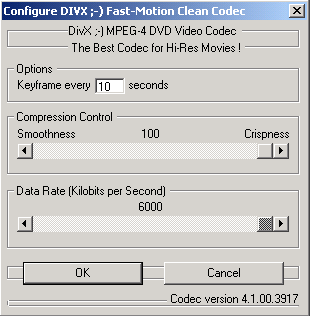MPEG-4: Optimization of Picture Quality and Data Rate
Optimization Of Flask Mpeg: Intel And AMD CPUs
Before we turn to software encoders, the analysis of hardware and, especially, the processor inside the PC system is important. There are two different versions for the conversion program Flask Mpeg, one that that is optimized for AMD's Athlon processors and one for Intel's Pentium III and Pentium 4 processors. The difference is actually not in the encoder, but the MPEG2-decoder (namely the iDCT part), which is always required to encode an MPEG2-movie to MPEG4. You'll find more information about FlasK at http://go.to/flaskmpeg . We would also like to mention that those two processor-optimized versions were created by Intel and AMD engineers as response to Tom's Pentium 4 articles from November and December last year.
Choice Of The MPEG-4-Codec: Fast Vs. Slow Motion
To keep the data stream as small as possible when encoding a DVD video, the choice of a suitable software codec is very important. For MPEG-4 there is DivX's "fast motion codec" and "slow motion codec". By using one of these two codecs, the essential choice has already been made. Therefore, at this point, the differences between the two codecs will be clearly pointed out:
Choice of suitable video codec.
Video sequence without "deinterlace" in MPEG-4 format.
The fast motion codec has been developed for video sequences, which contain a large number of fast movements (surprise surprise). These include, for example, action films where the movement direction of people and objects changes very often. At the same time, the scenes change very frequently, so that transitions are normally very sudden. This MPEG-4 codec works with dynamic compression and is, therefore, very efficient. Only the upper limit for the resulting data rate can be fixed - an exact setting is not possible. Here is an example: if a DVD video is coded with the fast motion codec and a maximum data rate of 6000 kBit/s, the average data rate in practice is between 1300 and 1400 kBit/s. The previously mentioned "6000 kBit/s" only refer to the maximum bit rate the encoder selects during the conversion process. An exact calculation of the data rate in order to, for instance, determine the data volume for writing a CD-ROM in advance is on no account possible.
Get Tom's Hardware's best news and in-depth reviews, straight to your inbox.
Current page: Optimization Of Flask Mpeg: Intel And AMD CPUs
Prev Page Perfect MPEG-4 Video: Resolution, Data Rate And Picture Quality Next Page Choice Of The MPEG-4-Codec: Fast Vs. Slow Motion, Continued
